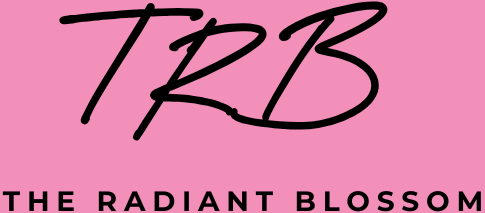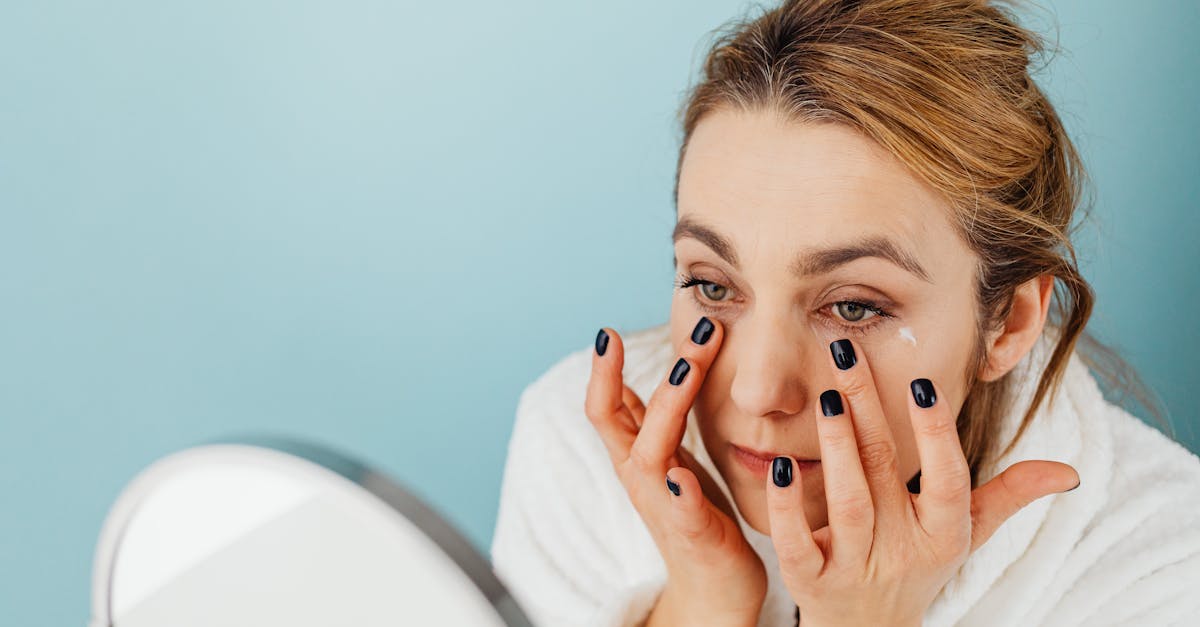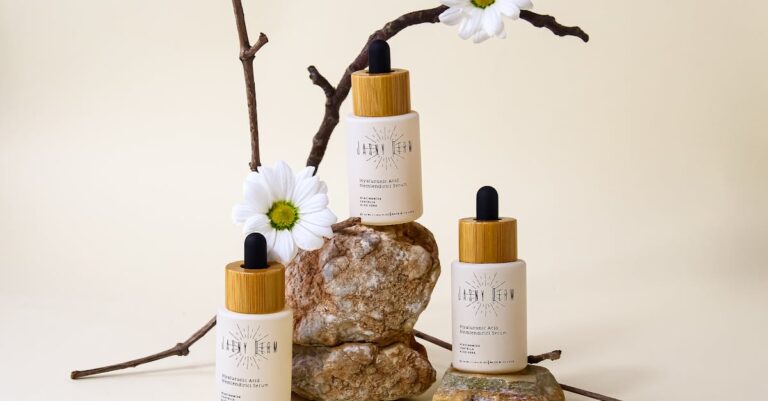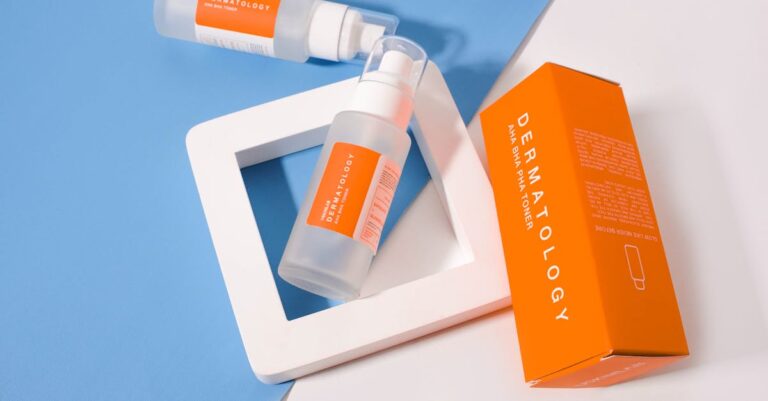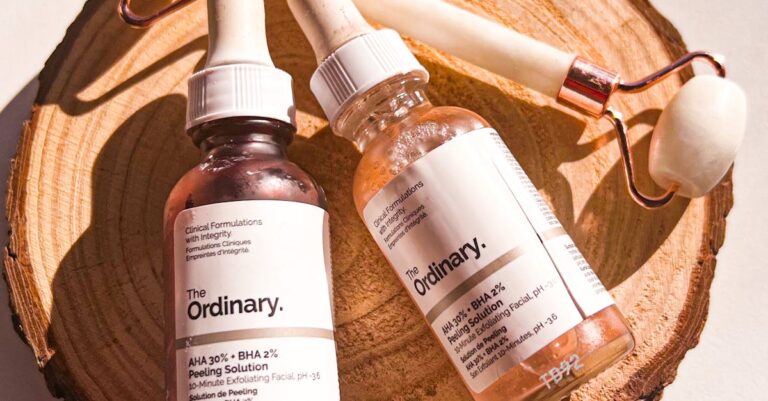In the ever-evolving world of skincare, new ingredients come and go, but some stand the test of time—or at least trend cycles. One such ingredient that has garnered attention both in scientific communities and beauty circles is caffeine. Best known as the compound that gives coffee its energy-boosting powers, caffeine is now a staple in a wide range of skincare products, from under-eye creams to cellulite lotions.
But why has caffeine become such a go-to ingredient? Is it just a marketing gimmick, or is there real science behind its use on the skin?
This article takes a deep dive into caffeine’s role in skincare—from how it works at a cellular level to its real-world effects, benefits, limitations, and everything in between. Whether you’re a skincare enthusiast, a curious consumer, or someone looking to revamp your beauty routine, this comprehensive guide will give you everything you need to know about caffeine-infused skincare.
What Is Caffeine?
Caffeine is a naturally occurring stimulant most commonly found in coffee beans, tea leaves, cocoa beans, and guarana berries. Chemically known as 1,3,7-trimethylxanthine, it belongs to a class of compounds called alkaloids, which have potent effects on the human body—especially the central nervous system.
While caffeine is best known for perking you up in the morning, its biological properties extend far beyond boosting alertness. In the context of skincare, its vasoconstrictive, antioxidant, and anti-inflammatory abilities make it a compelling ingredient for topical formulations.
Caffeine used in skincare products can be:
- Naturally derived from coffee or tea
- Synthetically produced in labs to ensure purity and consistency
Regardless of the source, the caffeine molecule behaves the same way when applied to the skin. However, natural extracts may come with additional phytochemicals that can influence the product’s overall effect.
In essence, caffeine is not just your morning motivator—it’s a multitasking molecule that can also play a supporting role in your skincare regimen.
How Caffeine Works on the Skin
Caffeine doesn’t just wake up your brain—it can also “wake up” your skin. When applied topically, it interacts with the skin in several interesting ways. Here’s how it works:
1. Vasoconstriction
Caffeine causes blood vessels to constrict, a process known as vasoconstriction. This reduces blood flow to the area, which can help:
- Diminish redness
- Reduce swelling
- Temporarily minimize the appearance of dark circles and under-eye puffiness
This is why caffeine is such a popular ingredient in eye creams.
2. Antioxidant Properties
Caffeine has natural antioxidant activity. Antioxidants help neutralize free radicals—unstable molecules that can damage skin cells and accelerate signs of aging. By scavenging these molecules, caffeine may help:
- Protect skin from environmental stressors (like UV and pollution)
- Slow down the formation of fine lines and wrinkles
3. Anti-Inflammatory Effects
Caffeine has a calming effect on the skin. Its anti-inflammatory properties can soothe redness, irritation, and mild swelling, making it a great option for sensitive or reactive skin types.
4. Diuretic Effect
Caffeine can act as a diuretic, meaning it may help draw excess fluid away from skin tissues. This contributes to its depuffing effect, particularly under the eyes. However, this is a temporary fix and not a cure for chronic puffiness.
5. Lipolytic Activity (Fat Breakdown)
Some studies suggest that caffeine can promote lipolysis, or the breakdown of fat cells. This has led to its inclusion in cellulite creams and firming lotions, although the actual clinical effects tend to be modest and short-term.
6. Penetration Ability
Caffeine is relatively small in molecular size, which helps it penetrate the outer layers of skin. However, how deeply it goes—and how effectively it works—depends heavily on the formulation, delivery system, and skin condition.
Caffeine may not be a miracle cure, but it does have multiple mechanisms that can make your skin look brighter, tighter, and more awake—at least temporarily.
Common Skincare Benefits of Caffeine
Caffeine isn’t just a trendy ingredient—it offers several legitimate benefits when used topically, especially in the right formulations. While many of these effects are temporary, they can make a visible difference in your skin’s appearance and feel.
1. Reduces Puffiness
Caffeine’s vasoconstrictive and diuretic effects make it a go-to ingredient for de-puffing, especially under the eyes. It helps tighten blood vessels and draw out excess fluid, which can reduce the appearance of tired, swollen skin—making you look more awake and refreshed.
2. Minimizes the Appearance of Dark Circles
While it doesn’t address hyperpigmentation directly, caffeine can reduce the vascular coloration (bluish or purplish tones) under the eyes caused by blood pooling or thin skin. This makes it a popular choice in eye creams and eye rollers.
3. Temporarily Firms and Tightens Skin
Caffeine’s ability to reduce water retention and stimulate circulation can give the skin a smoother, tighter appearance. This makes it useful in products aimed at lifting or firming the skin, especially in facial and body treatments.
4. Improves Circulation
Increased microcirculation from caffeine application can give the skin a subtle rosy glow and improved oxygenation, contributing to a healthier look and feel—at least temporarily.
5. Protects Against Environmental Damage
Thanks to its antioxidant content, caffeine can help defend the skin against free radicals generated by UV rays and pollution. Over time, this protection may help reduce the formation of fine lines, wrinkles, and sunspots.
6. May Reduce the Appearance of Cellulite
Caffeine is frequently included in anti-cellulite creams due to its ability to:
- Stimulate fat breakdown (lipolysis)
- Dehydrate fat cells temporarily
- Improve blood flow
While it won’t eliminate cellulite, it can visibly smooth and tighten the skin’s surface for a short time.
So while caffeine isn’t a long-term cure for skin issues, it can definitely deliver visible short-term perks—especially for puffiness, dullness, and tired-looking skin.
Types of Products That Use Caffeine
Caffeine’s versatile properties make it a popular addition to a wide range of skincare products. It’s often paired with ingredients like hyaluronic acid, peptides, niacinamide, or green tea extract to amplify benefits. Here’s a rundown of where you’ll commonly find it:
1. Eye Creams and Gels
This is caffeine’s most famous role in skincare. Eye creams, serums, and rollers that contain caffeine are designed to:
- Reduce puffiness
- Minimize dark circles
- Tighten the delicate under-eye area
These products often have cooling applicators (like metal rollerballs) to enhance the de-puffing effect.
2. Face Serums and Moisturizers
Caffeine is sometimes used in lightweight serums or moisturizers aimed at:
- Energizing tired skin
- Fighting early signs of aging
- Offering a subtle tightening or toning effect
These are usually applied in the morning to give skin a more “awake” look.
3. Face Masks
Caffeine-infused masks, especially sheet masks or gel masks, deliver an intensive dose of antioxidants and circulation-boosting effects. They’re ideal for a quick refresh before events or when your skin looks dull or puffy.
4. Body Lotions and Creams
Caffeine is commonly used in firming and anti-cellulite body products, particularly those targeting thighs, buttocks, and stomach. These often claim to:
- Smooth the appearance of dimpled skin
- Firm and tighten the area
- Improve circulation
While the effects are temporary, regular use can make skin look more toned.
5. Scrubs and Exfoliants
Coffee-based scrubs and exfoliants combine the physical exfoliating power of coffee grounds with the invigorating effects of caffeine. These products can:
- Brighten dull skin
- Stimulate circulation
- Temporarily improve texture
Bonus: they smell like your morning latte.
6. Lip Products
Caffeine occasionally appears in lip plumping balms or treatments, where it may stimulate blood flow for a fuller appearance—though results are subtle and short-lived.
Caffeine can be found in everything from luxury serums to DIY scrubs, and its applications span both face and body care. The key is choosing the right product for your skin goals.
Scientific Evidence and Studies
Caffeine’s role in skincare isn’t just marketing fluff—there’s some real research behind it. However, the results are mixed depending on what benefit you’re looking for. Here’s a breakdown of what science says so far:
1. Puffiness and Under-Eye Swelling
Several studies support caffeine’s vasoconstrictive properties, showing it can reduce periorbital puffiness (swelling around the eyes). By narrowing blood vessels and promoting drainage of excess fluid, caffeine can visibly reduce puffiness—though the effect is typically temporary.
Key study:
- A study published in Skin Pharmacology and Physiology found that topical caffeine reduced skin edema and redness in the short term.
2. Antioxidant Activity
Caffeine has been shown to be a potent antioxidant, particularly in protecting against UV-induced oxidative stress, which contributes to skin aging.
Key study:
- Research published in the Journal of Investigative Dermatology highlighted caffeine’s ability to suppress UVB-induced skin damage and reduce the risk of photoaging in animal models.
3. Cellulite and Fat Reduction
The evidence for caffeine’s lipolytic effect (fat breakdown) is limited but intriguing. In vitro studies (test tube/lab studies) suggest that caffeine can:
- Stimulate the breakdown of fat cells
- Inhibit fat accumulation
However, the in vivo effects (on real human skin) are less consistent. Caffeine’s ability to reduce cellulite may come more from its diuretic and circulation-boosting effects than actual fat breakdown.
Key study:
- A 2015 study in the Annals of Dermatology found that a cream with 3.5% caffeine improved the appearance of cellulite over 6 weeks—but only with consistent application and massage.
4. Skin Penetration and Delivery
Studies have shown that caffeine is a small, water-soluble molecule, making it capable of penetrating the stratum corneum (outer skin layer). However, how deep it goes and how effectively it works depends on the formulation, including:
- pH level
- Emulsifiers
- Carrier agents (like liposomes)
5. Anti-Inflammatory Effects
Caffeine also shows anti-inflammatory activity, particularly in soothing redness and irritation. This makes it a potential ingredient for calming sensitive or rosacea-prone skin, though it’s often not a primary treatment.
Limitations of the Research
- Most studies are short-term and use small sample sizes
- Few are peer-reviewed human trials
- Effects are often modest and temporary
- Results can vary by individual skin type and condition
Bottom Line
There is solid evidence for caffeine’s ability to reduce puffiness, protect against oxidative stress, and temporarily smooth skin. Claims about cellulite reduction or long-term fat loss, however, should be taken with a grain of salt—and a healthy dose of realistic expectations.
Pros and Cons of Using Caffeine in Skincare
Like most skincare ingredients, caffeine isn’t a miracle cure—but it does come with some strong perks, especially when used smartly. Here’s a balanced look:
Pros
1. Quick Visible Results
- Reduces puffiness and tightens skin almost instantly, especially around the eyes.
- Makes you look more awake and refreshed with just one use.
2. Antioxidant Protection
- Helps defend the skin against free radical damage from pollution and UV exposure.
- May support anti-aging efforts when used consistently with SPF.
3. Improves Skin Tone Temporarily
- Enhances circulation and gives skin a subtle “glow.”
- Temporarily firms skin and smooths texture.
4. Readily Absorbed
- Small molecular size allows it to penetrate the skin easily.
- Pairs well with other ingredients in serums, creams, and masks.
5. Low Risk of Side Effects (for most)
- Generally considered safe for topical use.
- Rarely causes allergic reactions when used in standard formulations.
Cons
1. Effects Are Temporary
- Benefits like depuffing or skin firming wear off after a few hours.
- Not a substitute for long-term solutions or treatments.
2. Limited Impact on Cellulite or Fat
- Some claim caffeine “melts fat” or eliminates cellulite—but evidence is weak.
- May improve appearance only while the product is in use.
3. Potential for Skin Irritation
- Some people (especially with sensitive or dry skin) may experience:
- Redness
Tingling - Minor irritation
- Redness
- Often due to high concentrations or poorly formulated products.
4. Not a Brightening Agent
- Doesn’t actually lighten dark circles caused by pigmentation.
- Works only on vascular-related darkness or puffiness.
5. Product Quality Varies Widely
- Concentration, formulation, and delivery systems matter.
- Some products overpromise and underdeliver.
Quick Summary
Caffeine is great for short-term perks: depuffing, tightening, and boosting skin tone. But don’t expect it to cure cellulite or be your primary anti-aging weapon. Think of it as a solid team player—not the star quarterback.
Who Should Use Caffeine Skincare?
Caffeine can be a great addition to your routine—if it matches your skin type and goals. While it’s generally safe and well-tolerated, it shines most for specific concerns. Let’s break it down:
Best Candidates for Caffeine Skincare
1. People with Puffy Eyes
- Ideal for those with morning puffiness, tired-looking eyes, or mild fluid retention.
- Especially effective when used in cooling gel or rollerball applicators.
2. Those with Dull or Tired-Looking Skin
- Caffeine can improve microcirculation, giving a temporary healthy glow.
- Great as a “pick-me-up” for sluggish or stressed skin.
3. Anyone Looking for Antioxidant Support
- If you’re already using antioxidants (like Vitamin C or niacinamide), caffeine can complement them by boosting your defense against environmental stressors.
4. People Concerned About Cellulite (With Realistic Expectations)
- Can be part of a cosmetic smoothing routine, especially when paired with massage or dry brushing.
- Works best for temporary firming, not permanent fat reduction.
5. Oily or Normal Skin Types
- Caffeine products tend to be lightweight and non-comedogenic, making them a safe choice for these skin types.
Who Should Be Cautious or Avoid It
1. People with Very Sensitive or Reactive Skin
- Some caffeine products contain high concentrations or harsh additives that might trigger redness or irritation.
- Always patch test first.
2. Those with Dry or Compromised Skin Barriers
- Caffeine’s vasoconstriction might temporarily reduce moisture delivery to the skin.
- Look for formulas that include hydrating ingredients (like hyaluronic acid or ceramides) if you have dry skin.
3. People Expecting Dramatic Results
- If you’re looking for a dark circle eraser or a cellulite cure, caffeine won’t be your magic bullet.
- Best used in combination with other ingredients and a solid skincare routine.
When and How to Use It
- Morning use is ideal due to its energizing, puff-reducing effects.
- Works well under makeup (especially eye creams).
- For body products, apply post-shower and massage into skin to boost absorption.
Caffeine skincare can be a game-changer if used for the right reasons and skin types. The key is knowing what it can do—and what it can’t.
How to Choose the Right Caffeine Product
With caffeine showing up in everything from drugstore eye gels to luxury body creams, knowing how to choose the right product can make all the difference. Here’s what to look for:
1. Check the Ingredient List
Look for “caffeine” listed high on the ingredients list (ideally within the top 5-10 ingredients). If it’s too far down, the concentration may be too low to make an impact.
- Pro Tip: Some labels use plant sources like Camellia sinensis (green tea) or Coffea arabica—which contain caffeine naturally. These count too, but pure caffeine tends to be more targeted.
2. Concentration Matters
There’s no universal standard, but effective products usually contain around 1–3% caffeine.
- Below 0.5% = unlikely to do much
- Above 3% = might cause irritation, especially around the eyes
3. Choose the Right Format for Your Goal
| Skin Concern | Best Format |
| Puffy eyes | Cooling eye gel, rollerball |
| Cellulite/firmer skin | Cream or lotion with caffeine + massage benefits |
| Tired/dull complexion | Serum or face mask |
| Antioxidant protection | Lightweight moisturizer or day serum |
4. Pairing Ingredients
Look for formulas that combine caffeine with complementary ingredients, such as:
- Hyaluronic acid – boosts hydration
- Peptides – improves firmness
- Vitamin C – adds brightening + antioxidant protection
- Green tea extract – adds additional anti-inflammatory and antioxidant support
5. Packaging
Caffeine is sensitive to light and air, so look for:
- Opaque tubes or airless pumps
- Avoid jars, unless you plan to use the product quickly
6. Brand Transparency
- Choose brands that list caffeine concentration and clinical testing data, if available
- Bonus points for dermatologist-tested, fragrance-free, or sensitive-skin-friendly labels
7. Watch for Irritants
Avoid products that contain high amounts of:
- Alcohol (especially denatured)
- Synthetic fragrance
- Menthol or excessive essential oils (in eye products especially)
Examples of Caffeine Product Types:
- The Ordinary Caffeine Solution 5% + EGCG – budget-friendly eye serum with a high caffeine dose
- Inkey List Caffeine Eye Cream – gentle and hydrating
- Clarins Body Fit Anti-Cellulite – premium body cream with caffeine for toning
Choosing the right caffeine product means balancing formulation, format, and your personal skin needs. A good product won’t just contain caffeine—it will deliver it in a way your skin can actually use.
Final Thoughts and Recommendations
Caffeine in skincare might not be a cure-all—but it absolutely earns its spot in a well-rounded routine. From visibly depuffing tired eyes to temporarily smoothing and tightening skin, it offers real, fast-acting results, especially when used thoughtfully.
The Takeaway
- Best for: puffiness, dullness, mild swelling, and short-term firming
- Works well with: antioxidants, peptides, and hydrators
- What it doesn’t do: permanently erase dark circles or cellulite
- What to expect: temporary improvements in tone, texture, and radiance
It’s not a long-term anti-aging superhero or a deep treatment, but caffeine is an excellent sidekick—one that shines when you want to look a little more alive, refreshed, or toned in a pinch.
Quick Recommendations
If you’re thinking about adding caffeine to your skincare, here’s how to get started:
| Skin Concern | Suggested Product Type | Pro Tip |
| Puffy under-eyes | Gel or serum with cooling applicator | Store it in the fridge for extra de-puffing power |
| Dull or tired-looking skin | Brightening serum or mask | Look for a combo with Vitamin C or niacinamide |
| Mild cellulite or firmness | Body cream with 1-3% caffeine | Massage in circular motions post-shower |
Final Thought
Think of caffeine skincare like a great espresso—not something you rely on for all your health goals, but a fantastic boost when you need to feel and look more awake.
